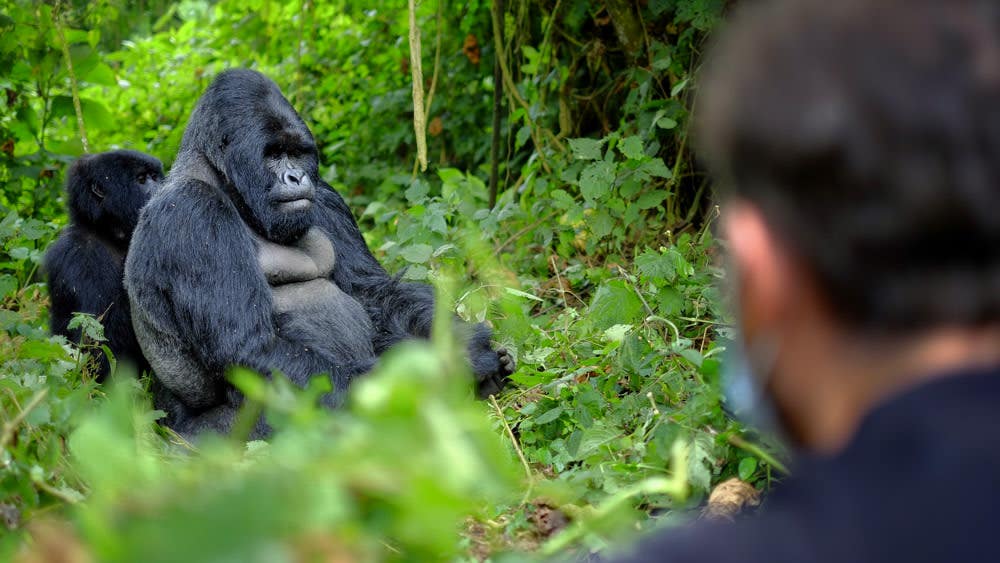Why gorilla friendships can be a blessing — or a curse
New research shows gorilla friendships offer both health risks and rewards depending on sex, group size, and social strategy.

A 20-year study of gorillas reveals surprising trade-offs between friendship, health, and survival—offering lessons that reach far beyond the jungle. (CREDIT: CC BY-SA 4.0)
For many species, friendship isn’t just about feeling good—it’s a complex strategy for survival. That’s one of the big takeaways from a long-term study on wild mountain gorillas, led by researchers from the University of Zurich, the University of Exeter, and the Dian Fossey Gorilla Fund. By tracking 164 gorillas over 20 years in Rwanda’s Volcanoes National Park, scientists discovered that close social ties can bring both major rewards and hidden risks.
Friendships, it turns out, are a double-edged sword. While they can improve your chances in life, they may also come at a cost to your health or success—depending on who you are, where you live, and how your group is structured.
Friendship Isn’t One-Size-Fits-All
The research team looked at how strong social bonds and group involvement affected gorillas' health and reproductive success. One clear pattern emerged: males and females experience social life in very different ways.
For female gorillas, tight-knit bonds in smaller groups often meant fewer illnesses. But this came with a downside—those same females had fewer surviving offspring. On the flip side, females in larger groups were more likely to get sick but also had higher birth rates. It’s a trade-off between staying healthy and raising more young.
Male gorillas faced a different puzzle. The more socially bonded they were, the more often they got sick. But they were also less likely to suffer serious injuries from fights. That might sound surprising at first, but researchers have a theory.
“Males may burn more energy maintaining close ties, especially since they need to protect females and their offspring,” explained Dr. Robin Morrison, senior researcher at the University of Zurich. “The stress from that extra effort might weaken their immune systems.”
Related Stories
Even more interesting, the study found that illness wasn’t always linked to how often gorillas physically interacted. This suggests that disease spread isn’t the only factor at play. Instead, the emotional weight of keeping up social relationships might affect the body’s ability to fight off sickness—especially for males.
Group Size and Structure Shape the Rules
Mountain gorilla groups usually include around 12 members, often led by a single dominant male. But not all groups are the same. Some are tight-knit and stable, while others are larger, more chaotic, or change often due to fights and outside conflict. This background, or social context, plays a big role in how friendships affect each gorilla.
“Depending on the group you’re in and your personal situation—like your sex, age, or whether you have kids—the same social strategy can either help or hurt you,” said Dr. Sam Ellis from the University of Exeter. “There’s no single ‘best’ way to be social. It’s all about fit.”
That’s a powerful insight. It helps explain why humans and other animals show such a wide range of social behaviors. Being outgoing and connected might work well for one person—or gorilla—but not for another.
In people, the number and strength of social connections are among the best predictors of long-term health and lifespan. But this new study shows that in nature, more isn't always better. Sometimes, staying a bit more reserved might actually be the smart move.
“This paper highlights the incredible value of long-term studies,” said Dr. Tara Stoinski, CEO and Chief Scientific Officer of the Dian Fossey Gorilla Fund. “Without years of detailed observation, we wouldn’t be able to see how the benefits and costs of social life shift across different environments.”
The study was published in Proceedings of the National Academy of Sciences. It was funded by the Swiss National Science Foundation and the Dian Fossey Gorilla Fund.
The Faces Behind the Findings
Numbers and statistics are important, but the real heart of the study lies in the stories of individual gorillas. Their lives show just how diverse and complicated social strategies can be.
Gutangara, for example, is one of the most successful gorilla mothers ever observed. Living in a large group, she has friendly ties with many group members but stays close to her children—both young and adult. So far, she’s raised eight surviving offspring. Her strategy blends connection with caution, and it seems to be paying off.
Maggie, on the other hand, was a natural leader. As the top-ranking female in her group, she could be both aggressive and caring. She often led group interactions and played a protective role, more commonly held by males. When her group’s dominant male died suddenly, Maggie stepped up and guided the group until it joined a neighboring one. But the change proved hard. She struggled to adapt and eventually left, wandering alone for a month before vanishing across the border into Congo.
Then there was Titus, a male silverback who rose from tragedy. After losing most of his family to poachers as a child, he became the group’s leader at age 15. Titus stood out for his gentle nature. He kept especially close bonds with females, who often stayed near him, touching him—something rarely seen in other groups. His calm energy made him highly attractive and helped him hold his leadership role for two decades, until he died in 2009.
Cantsbee, another legendary silverback, ruled for 22 years—the longest known reign. He fathered at least 28 offspring and was respected for his calm yet firm leadership. He rarely started fights but always stepped in when needed. His bond with his son Gicurasi was especially strong, helping ease the group’s transition when Gicurasi took over leadership. In his final days, Cantsbee quietly left the group and spent his last months alone, returning just once to visit before passing away.
What This Means Beyond the Jungle
Although the study focuses on mountain gorillas, the lessons apply far beyond Rwanda’s forests. In all social animals—including humans—relationships can offer strength, safety, and support. But they can also demand energy, create stress, or come with hidden costs.
This research suggests that there is no perfect social formula. The best approach depends on your role in the group, your personal health, and your long-term goals—like having children or avoiding injury.
And just like in gorilla groups, people often adjust their behavior depending on their environment. In smaller friend circles, support may be stronger but less widespread. In larger social groups, you might reach more people but risk more stress or conflict.
By understanding how these trade-offs work in the wild, scientists hope to better understand the roots of human behavior. The idea that more social connection is always good may need to be rethought. In some cases, less contact or fewer obligations could be a safer, smarter choice.
The lives of Gutangara, Maggie, Titus, and Cantsbee show just how flexible, personal, and strategic social life can be. Every friendship comes with a price—and a reward. The key is learning which ones are worth it.
Note: The article above provided above by The Brighter Side of News.
Like these kind of feel good stories? Get The Brighter Side of News' newsletter.



